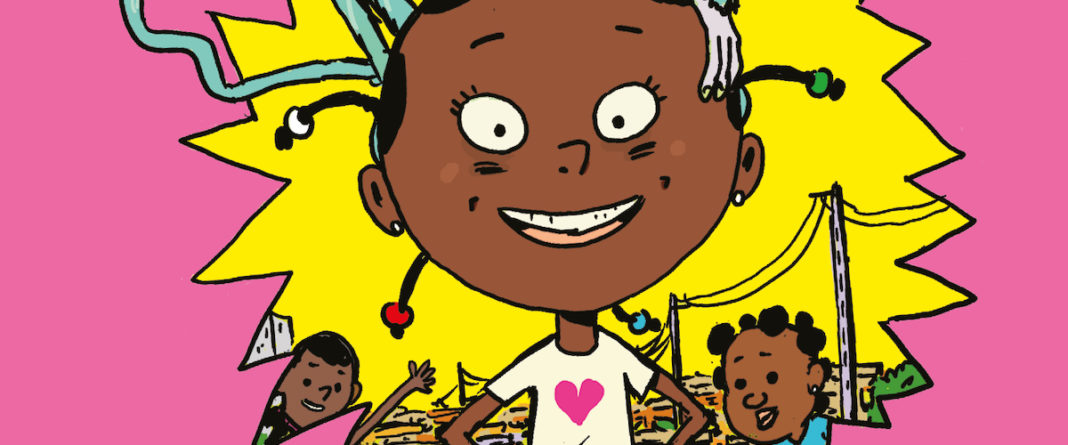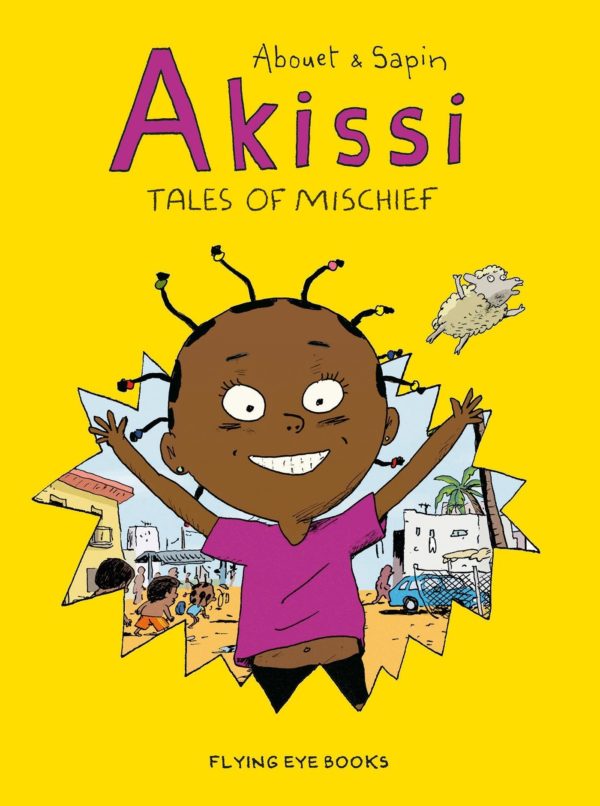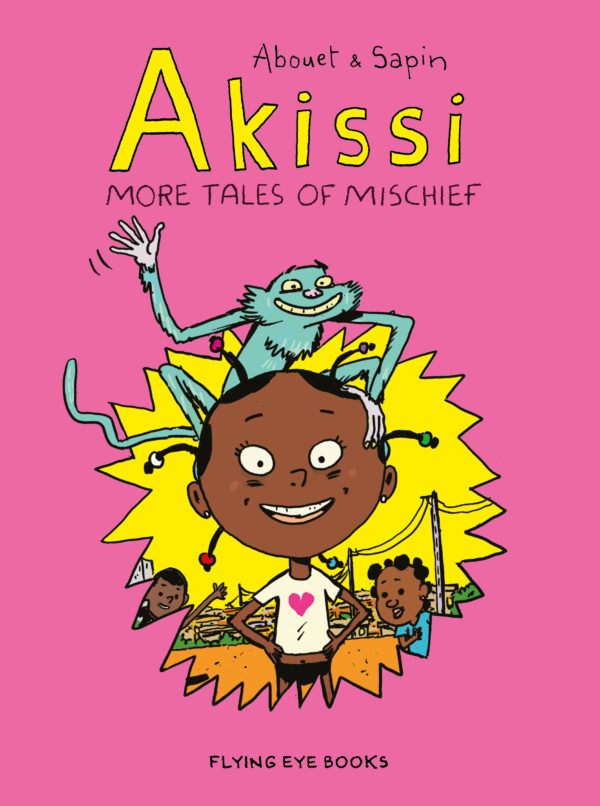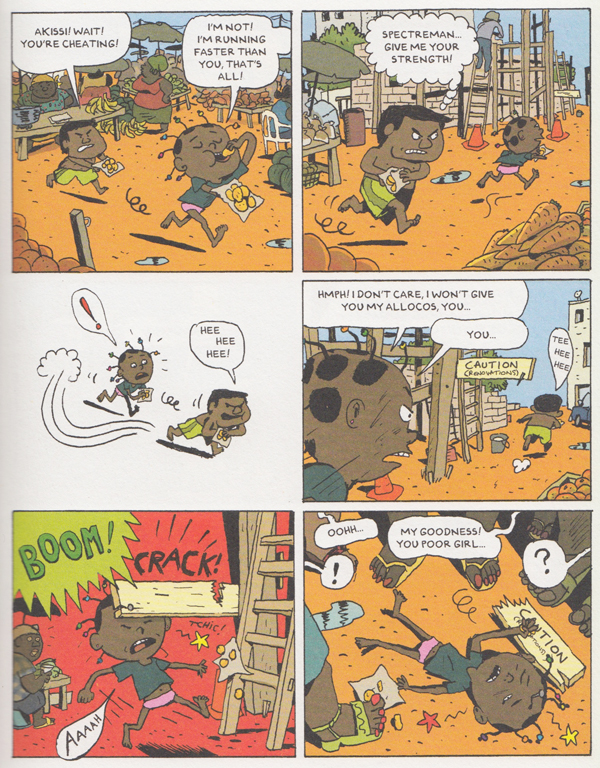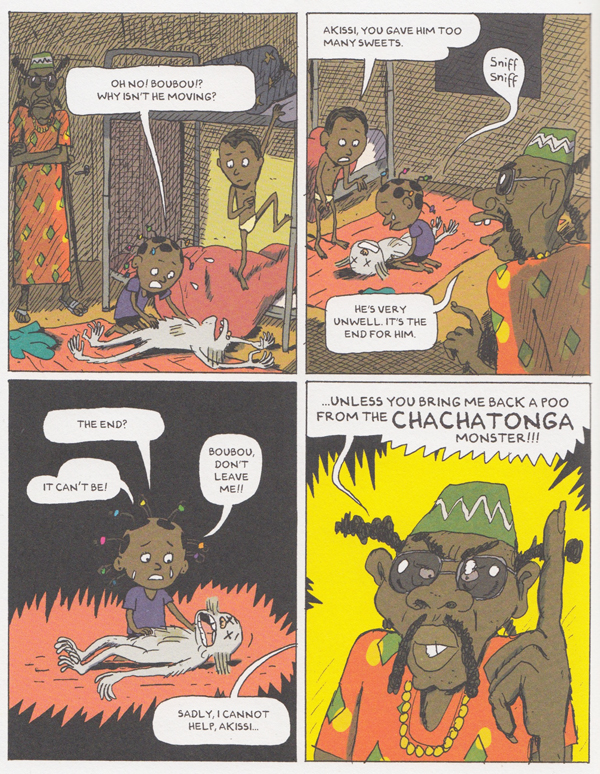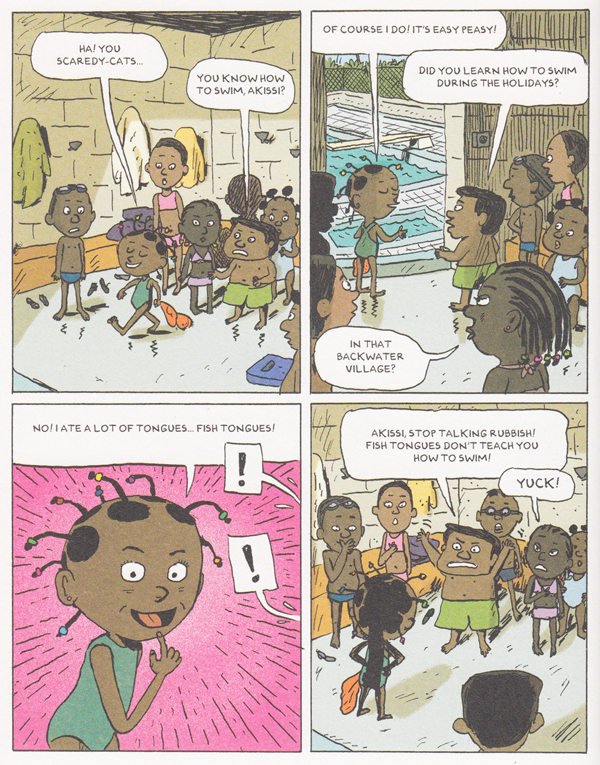Akissi: Tales of Mischief and Akissi: More Tales of Mischief
Written by Marguerite Abouet
Illustrated by Mathieu Sapin
Flying Eye Books
It’s a pleasure to see the Angoulême prize-winning Akissi books by West African-born writer Marguerite Abouet — best known for her excellent Aya graphic novels — and accomplished French cartoonist Mathieu Sapin to receive an English language release. The first, Akissi: Tales of Mischief came out in 2018 with the second volume, Akissi: More Tales of Mischief, following last month, and together they make for a madcap reading experience that’s hard to duplicate in the 21st Century. Part informative social and cultural document, part a laugh-out-loud comedic free for all that embraces forbidden topics, it’s the kind of thing where a kid might learn a little something and get plenty of opportunities to laugh about poop.
Akissi is a spirited girl living in a village on the Ivory Coast, and a lot of the stories and humor stem from the time-honored comic book situation of kids getting into hijinks. There always has to be an instigator and Akissi is that — a mild bully, a total swindler, and someone determined to be the boss of all the other kids. And as you can expect in this genre, she exasperates her parents as she runs circles around them, with legs and mouth.
Part of what makes Akissi different is the Ivory Coast setting, which when mixed with the culture sets an unexpected comedic tone that breaks the boundaries of American comics. For instance a story in the the first book, “Tapeworm,” builds its comedy out of Akissi’s mom trying to help her expel a tapeworm and the terror Akissi feels at the process, which Akissi is able to reverse on her older brother by taunting him with a tapeworm that comes out of her nose.
There’s another story in which Akissi sees intentionally getting lice as a good scheme to get all her hair cut off permanently, but when she actually does get them, it doesn’t go as planned. And what happens with Akissi when she encounters some clandestine church wine definitely pushes past what’s generally acceptable in kids’ books in America.
Equally, the rural village life allows for a freedom of movement for its kid characters that you don’t see in modern American stories. The kids are really free range and even when they get up to no good in a dangerous way, as with one story where a boy falls off a roof pretending to be Spectreman, it’s played for comedy.
It’s pure Nancy and Sluggo, but transplanted to the other side of the world and with a lot of baby-stealing involved.
The second volume manages to push even more boundaries. School is starting back up and Akissi doesn’t want to go — she makes enough noise about it, in fact, that a pretty horrible accident causes grown-ups to think she’s engineered it herself in order to be absent. But who would blame her if she did, as she and the other kids are facing time with the cranky Mr. Adama, who hates kids, doesn’t want to be a teacher, and has sworn to expel all fun activities from the school day.
This situation sweeps through the entire book, fodder for laughs as Akissi attempts to screw up her schooling on purpose just out of fear of the new teacher. But the recklessness leading to danger exhibited in the former book hasn’t gone away, and humor is derived from nearly getting hit by speeding cars and nearly drowning, each time Akissi’s posturing nearly causing her demise and forming such incidents into part-jokes, part-cautionary tales.
But at the same time, Akissi’s crafty personality is what allows her to combat taunts and bullying so effectively, and it’s also what gives her the confidence to concoct plans that align her with the boys more than previously. It’s also what gives her the ability to contend with a madcap witch doctor’s antics and advice, which leads to a strong fantasy-laden adventure in which Akissi searches for magical animal poop. This sets the tone for a fairy tale version of Akissi’s struggle against Mr. Adama, recast as an ugly king forcing the subjects to also be ugly — until a magical Akissi comes along to save the day.
Fantasy can only partially obscure Akissi’s rough edges and the final section of the book concerns her rivalry with a new girl in the school — Sido, whose leg was eaten by a lion by who is unencumbered by her situation. It’s here that the darker side of Akissi’s virtues are really explored. Her audacity morphs into cruelty, but Abouet unapologetically takes this as an opportunity to examine Akissi’s insecurities, though not without some deliciously madcap moments.
Oddly, the Akissi stories remind me of the occasional short pieces and interludes by Jaime Hernandez in his Locas stories when he would go back to the childhoods of his grown characters and take a look at their freewheeling existence in Hoppers. The Akissi books have a surprisingly similar vibe and I would say even matches some of the darker psychological tones that crop up in the Hernandez stories, though Abouet is able to present these in remarkably kid-friendly terms.
Part of the success at doing this certainly goes to Abouet, but illustrator Sapin is crucial to the success. His rendering of Akissi’s world is rich and full, and his people are animated and lively. There’s a real energy to what he puts down on the page, filled with frantic emotions that heighten the events and the comedy. But he’s also able to give authority to the diminutive Akissi and make her the center of his drawings.
The autobiographical element from Abouet is also crucial in that it offers a genuine quality to the stories, and having lived the life allows them to forgo any sentimentality. Instead Abouet imbues the stories with a sense of adventure that should speak loudly to so many American children reading it, possibly facing a cloistered, overbooked day-to-day existence. Akissi’s life must be a dream come true.


